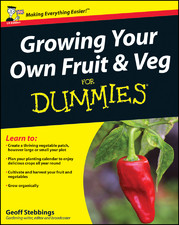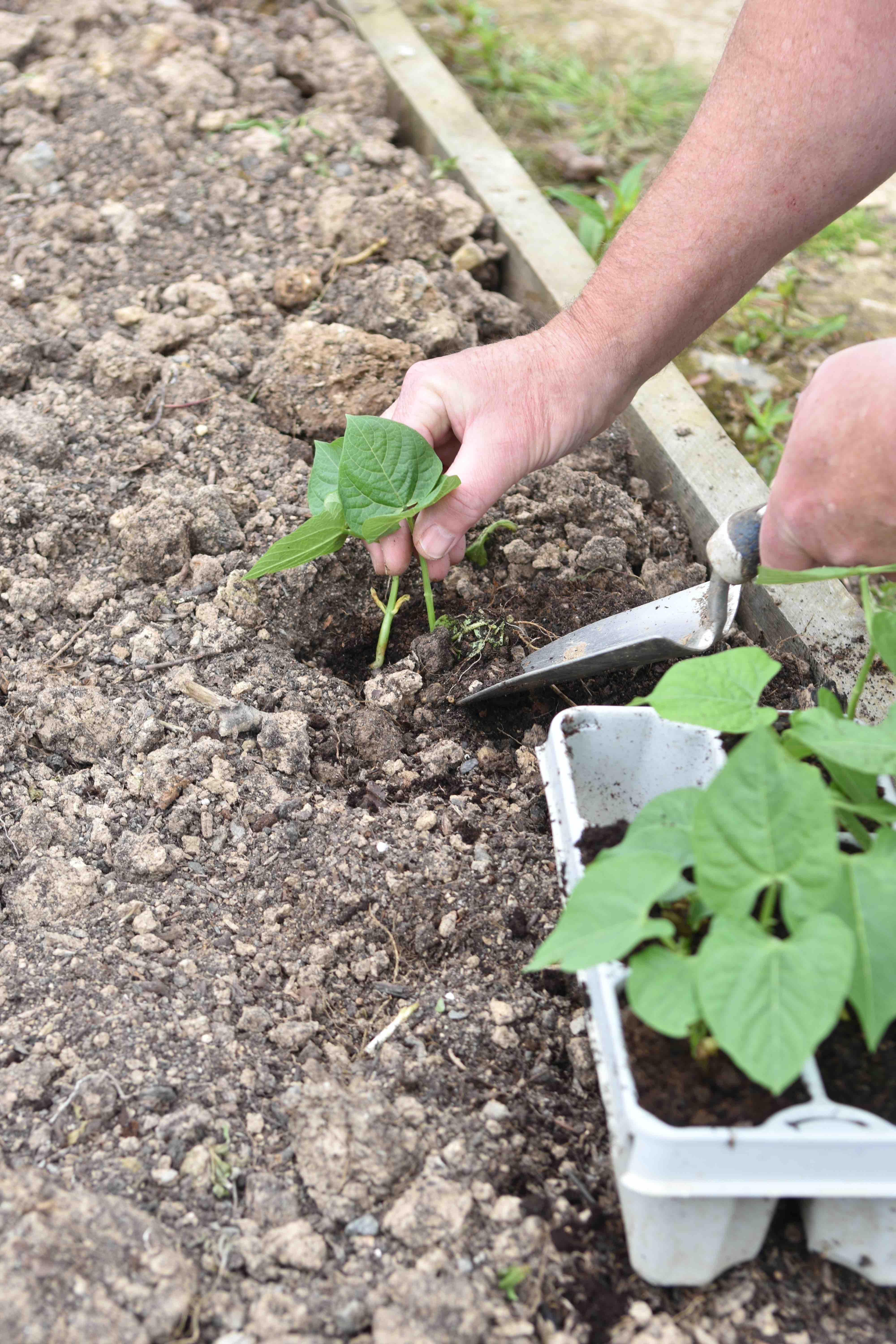
I have never needed a reason to grow my own crops; it is satisfying and it is a joy to pop into the garden to pick something for lunch. But with finances squeezed and supermarkets running out of veg, this may be the year to have a go yourself. Over the years I have covered growing veg many times but perhaps now is the time for a few reminders. Anyone can grow something to eat but you really need a large plot if you want to be self-sufficient, and you need a lot of time. But with a small space and just a few minutes a day, you can grow something to eat. This week I am going to skim over some basics to help you get started and then, in future weeks, I will cover specific crops.
Getting started
Most crops need a sunny spot. If the plot is shady you will be restricted to leafy crops but lettuce and spinach will grow well. If you have a patch of soil already cleared then dig it over and add garden compost if you can. remove all perennial weeds.
If you do not have an area ready and want to make a bed in grass you need to get your skates on. If you are happy using chemicals, kill the grass with a weedkiller containing glyphosate and, when the grass is yellow, dig it over and add garden compost or any organic matter you can get. I understand that some people may not want to use weedkillers but it will save you time. Unless you have light soil you will not be able to grow much till May, to allow the soil to settle, and so you can break down lumps of soil. But you can plant large, robust plants such as sweetcorn and squashes. If you don’t want to use chemicals you can cover the area with black plastic or cardboard to kill the grass and you could plant through this. The levels of success will depend on the nature of your soil. My own plot was a grass field and is heavily compacted. I could not just plant direct into it and digging is essential. A problem with newly-converted lawn is that it will contain soil pests and, once the grass is dead, they will attack your crops. Digging helps reduce them.
No plot is perfect for all crops. You will soon find what you can grow well. Heavy clay soil is not ideal for root crops but it is good for cabbages and sprouts. And as you cultivate it you can improve the soil. My soil is heavy and carrots struggle but I grow them in pots.
If you are just starting it is often best to grow in containers. You can grow most crops in large pots of multipurpose compost, or raised beds or veg ‘drugs’. You can even use the compost bag on its own. Just cut holes in the top to plant through after your have laid the bag down. Just make sure you have ‘fluffed up’ the compost in the bag. This is perfect for salad crops and lettuce.
Start off small. Don’t try to grow everything. Start with what you like to eat. Seeds are the cheapest way to grow veg but veg plants are often better if you don’t need a lot of plants. I grow 10 or 12 Brussels sprouts plants to feed two of us and a pack of 12 plants is perfect. Three courgette plants is enough for two. On the other hand, don’t buy radish or beetroot plants – sow seeds instead. One sprout plant will produce up to 1kg of sprouts but one radish seedlings produces one radish! If you plant twelve cabbages they will all be ready to eat within a two week period. Would you eat a cabbage every day?
That is where beans are good crops to grow. Their pods can be picked over an extended period. Climbing peas and climbing French beans will crop for a longer period than dwarf kinds. I usually prefer modern, F1 varieties because they are usually easier to grow but old kinds of peas are sometimes better for the home gardener because they crop for an extended period. Modern kinds are bred to mature at exactly the same time so they can be harvested by machine, all on the same day. This is not an advantage for the home grower.
To avoid gluts and famines you need to sow little and often and that is where packs of plants are so handy. Buy a pack of lettuce plants every month and you will get a constant supply all summer. Nag’s Hall will stock healthy plants all spring and summer so you can keep your plot productive.
Don’t start too early. Get your soil or pots ready but remember that some crops, such as tomatoes, cucumbers, sweetcorn and courgettes are killed by frost and can’t be planted out till May. French beans, which are a crop everyone should grow, will not germinate if the soil is cool so should not be sown outside till early `May.
So what should you grow? Here are my suggestions, all of which can be grown in patio pots too.
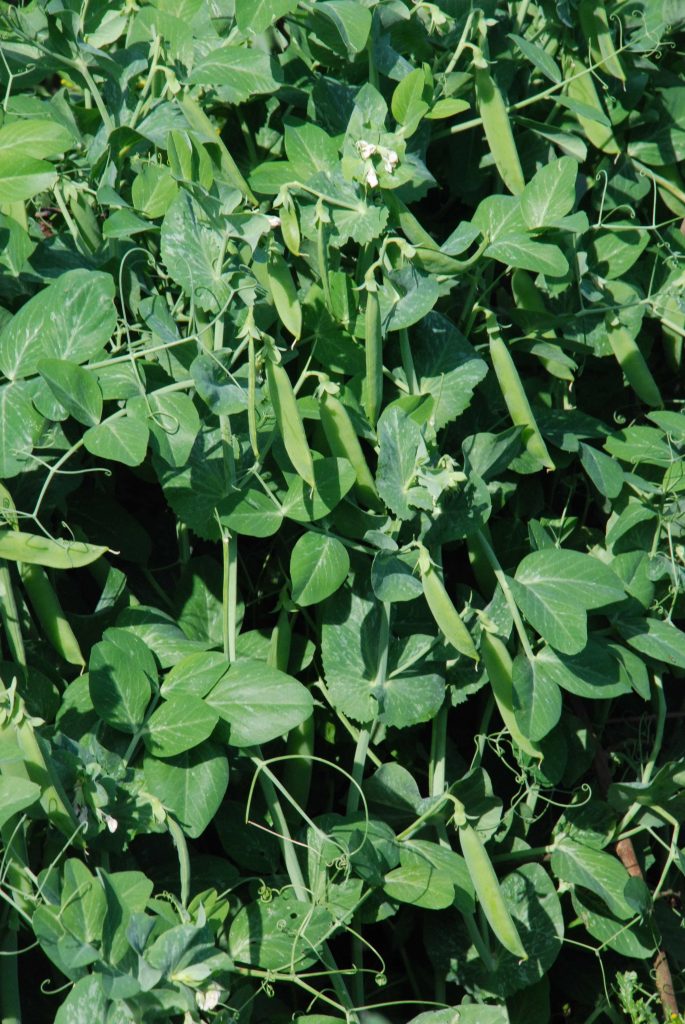
Peas You will never grow enough peas to fill your freezer but if you like fresh, raw peas then these are an easy, tasty treat. Few of mine ever make it into the kitchen. You can sow a few throughout summer and you can grow them in pots if you choose a dwarf variety. Even better, the pea shoots and tendrils can be eaten in salads. I also grow mange tout peas which are so useful in the kitchen and are expensive to buy. You can get mange tout peas with purple and yellow pods too, which are easier to see on the plants and pick.
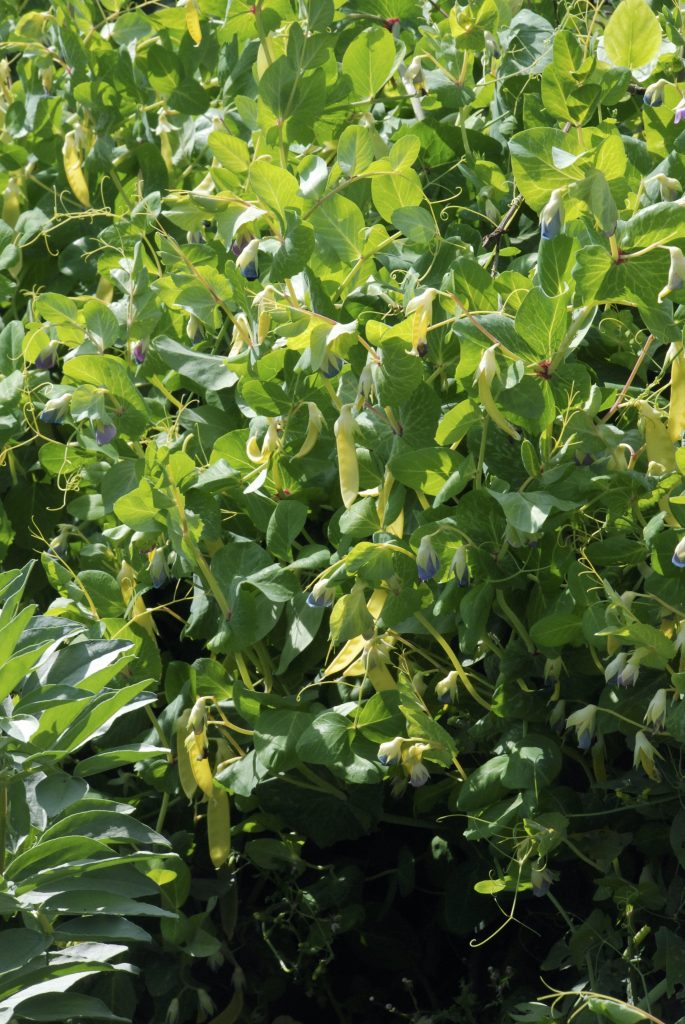
Courgettes These are large, attractive plants and you can get seeds of yellow and round courgettes too. They often fail to set early in the season but as the weather warms they are very productive. Pick the when they are small to keep them producing – don’t let them grow into marrows! They grow well in pots or plant two in a growing bag.
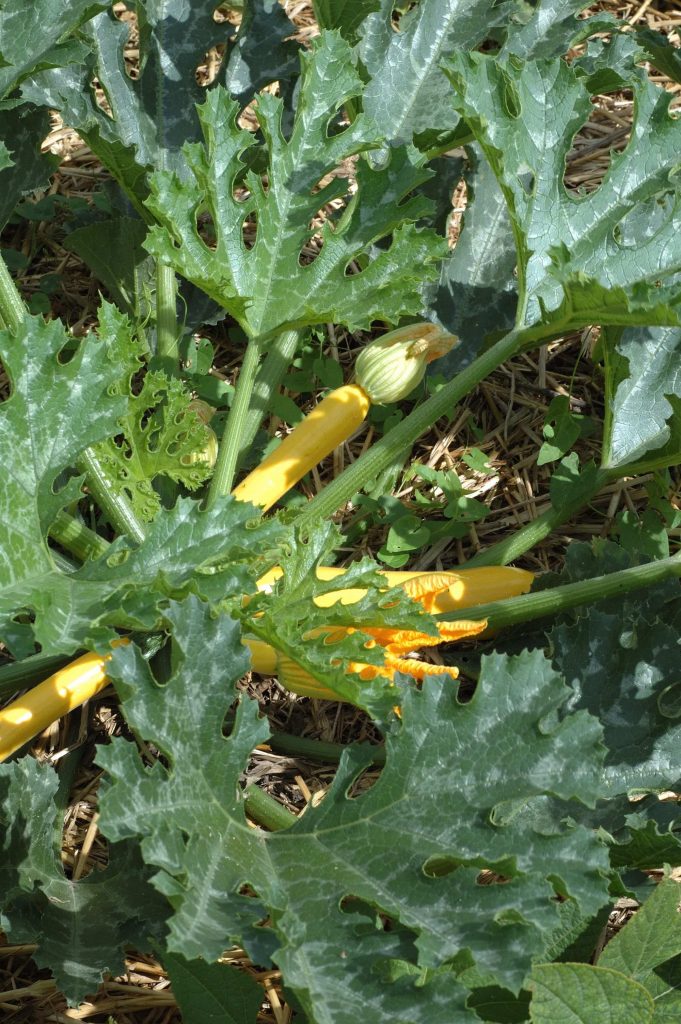
Cucumbers For ease, grow F1 hybrid, all-female kinds. You can buy plants but the seeds are expensive and a pack only contains three to five seeds so growing your own is often better to be sure you are getting what you want. I now grow mini-cues to avoid those ‘half cucumbers’ sitting in the fridge. Cucumbers need warmth and moisture and are best in a greenhouse. I grew these in a mini-greenhouse last year with one plant per 25cm (10in) pot. Three plants produced all I needed fresh and plenty to make cucumber relish which I am still enjoying.
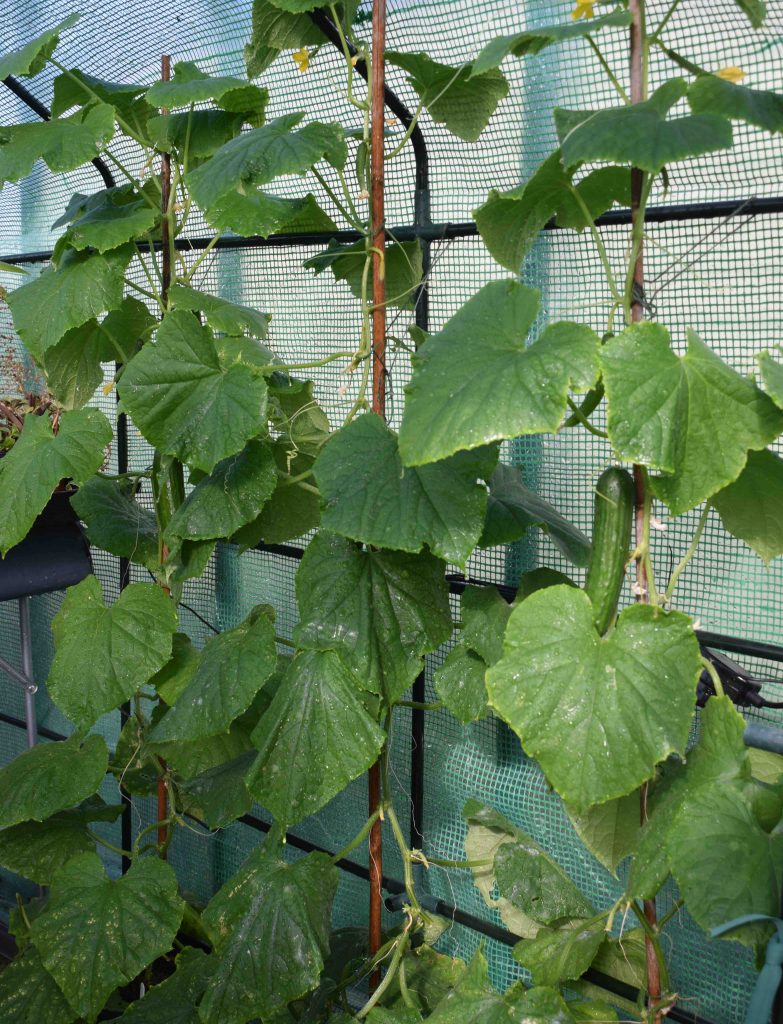
Potatoes This crop needs lots of space and there is the issue of blight in late summer so I stick to ‘earlies’ which are harvested in July and August. I usually grow them in bags for an even earlier crop.
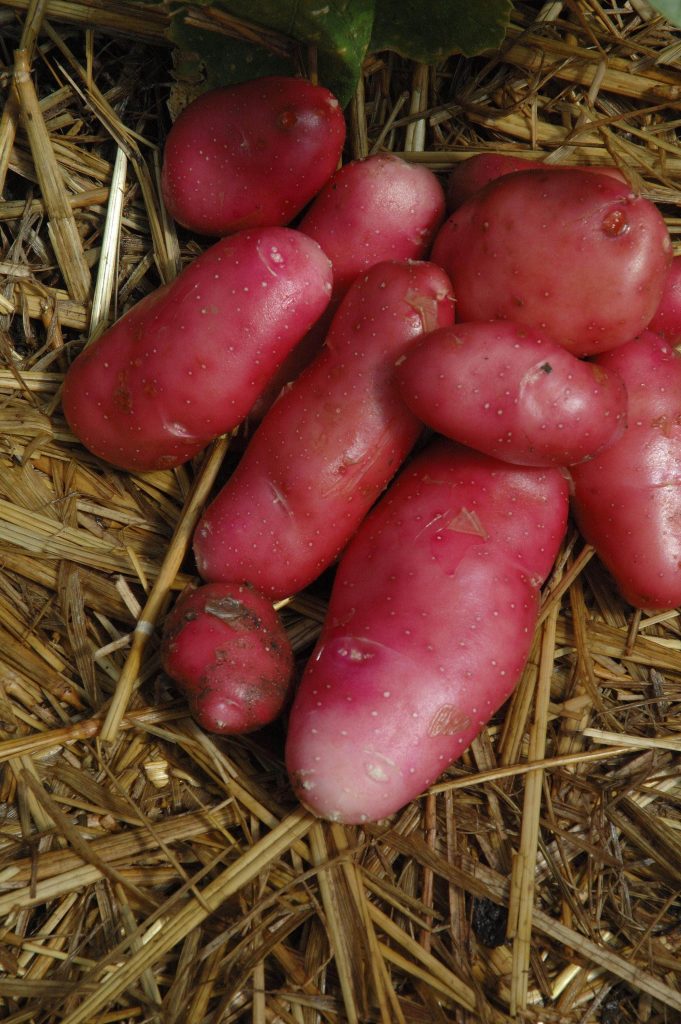
Tomatoes Summer would not be right without tomatoes. After many years, growing hundreds of varieties, I now tend to grow mostly cherry tomatoes because they usually crop more quickly and I like their sweet taste. I also grow some ‘paste’ toms for sauces too. If you are growing them for the first time I would recommend ‘Sungold’ which is so sweet but any home grown tom is better than from the shop. I sow my seeds in the third week of March for plants to put in the poly tunnel in May. Just remember that the plants are damaged by frost so don’t plant too early.
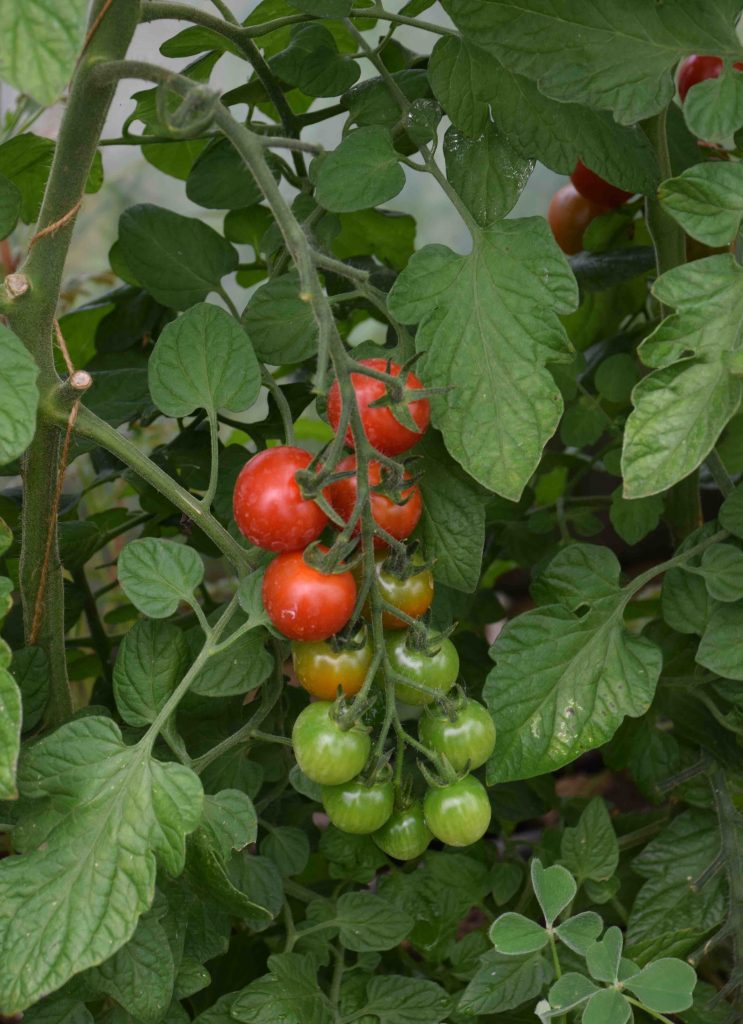
Beetroot Not everyone likes beetroot but if you do it is easy to grow and can be grown in pots. Seedlings that are removed to thin the rows can be added to salads and you can eat the roots at every stage.
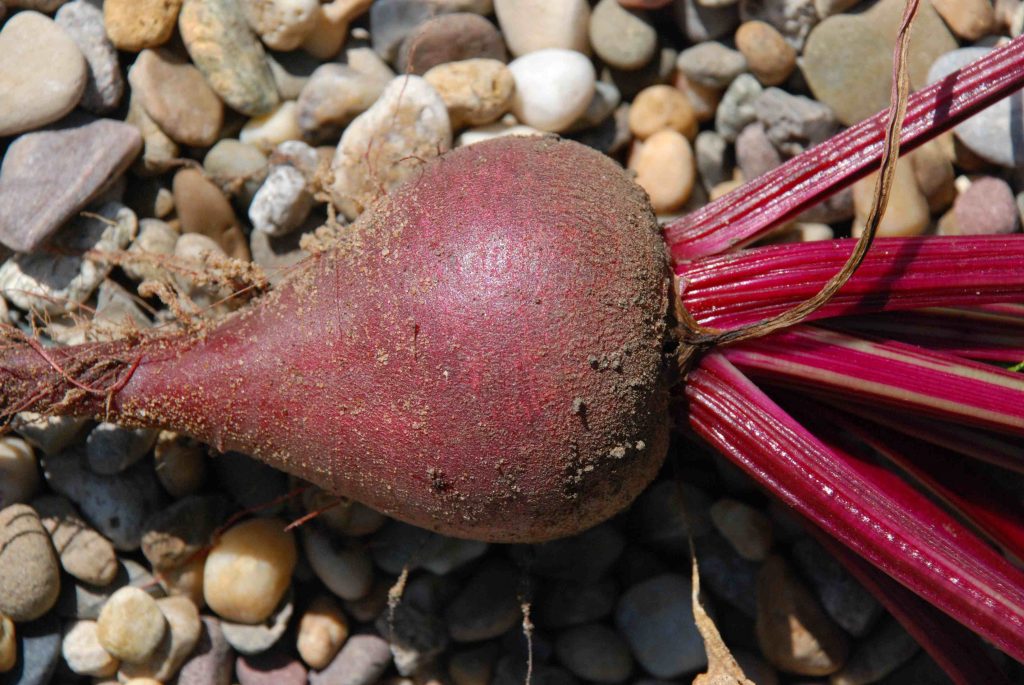
Carrots These can be tricky to grow in the soil and have various pests, but they are easy to grow in large pots of compost. They grow slowly so sow some radishes along with them so you can enjoy the radishes and then leave room for the carrots to develop.
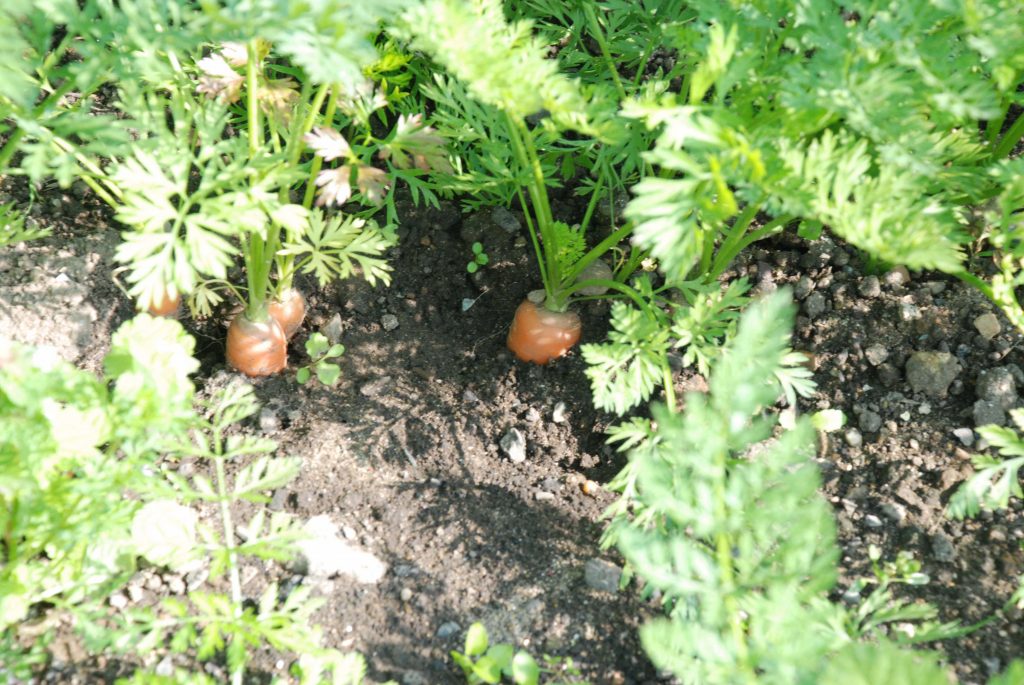
And, of course, onions are essential for the garden and kitchen so I will look at these in more detail next week.
To grow some veg on the patio you will need:
Containers – ideally more than 30cm wide and deep
Compost – multipurpose compost is perfect for most crops
Labels and pencil
Trowel or handfork
Liquid fertiliser (tomato fertiliser is fine for most crops though a general fertiliser is best for leafy crops)
Watering can
A windowsill propagator with trays and pots is helpful to nurture seedlings to plant out later
A good book is always handy for reference and ‘Growing Your Own Fruit and Veg for Dummies’ is a complete guide and will answer all your questions. I am biased because I wrote it but it is a comprehensive book packed with information. There are no colour photos, just a practical guide that will be useful for new and seasoned gardeners.
